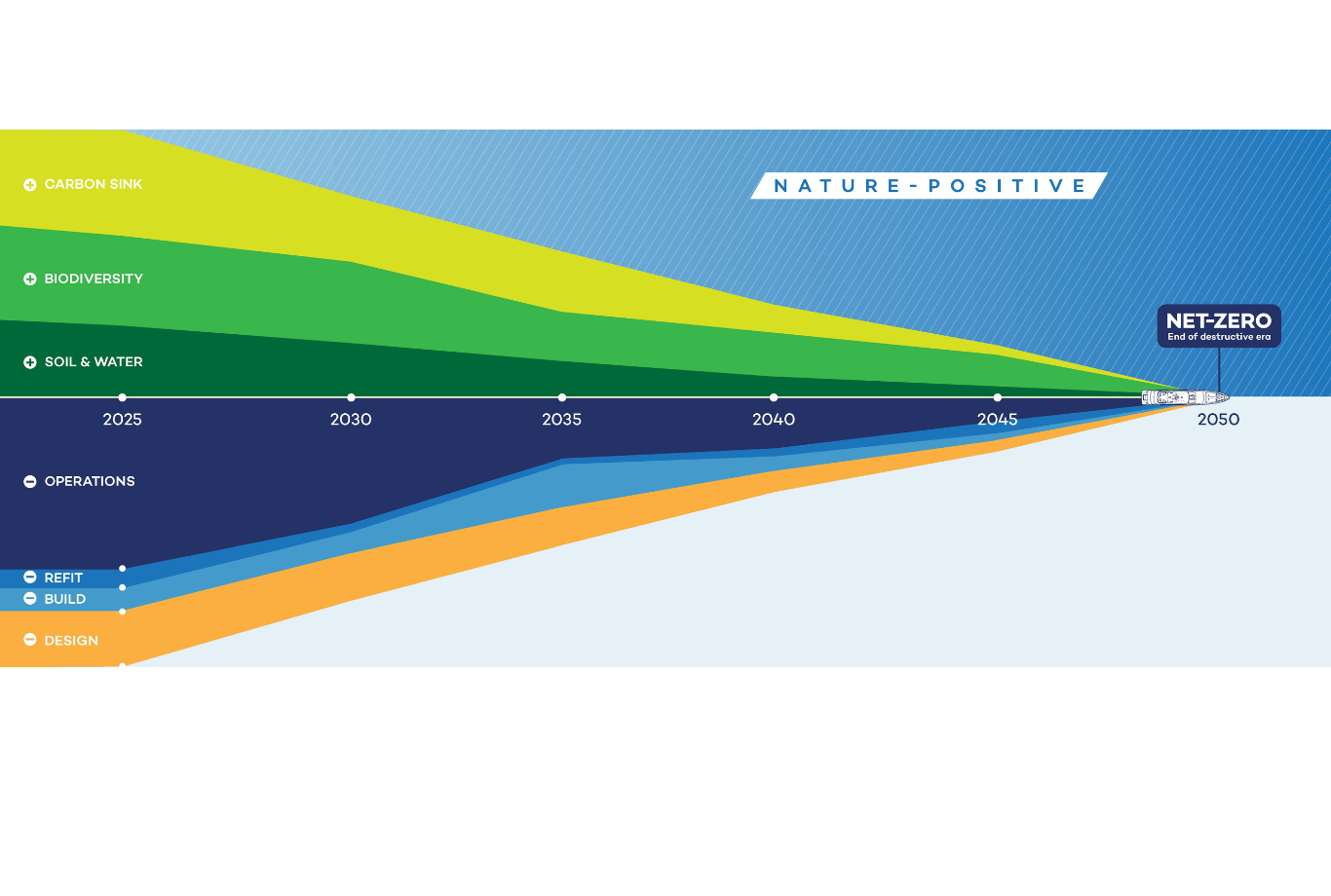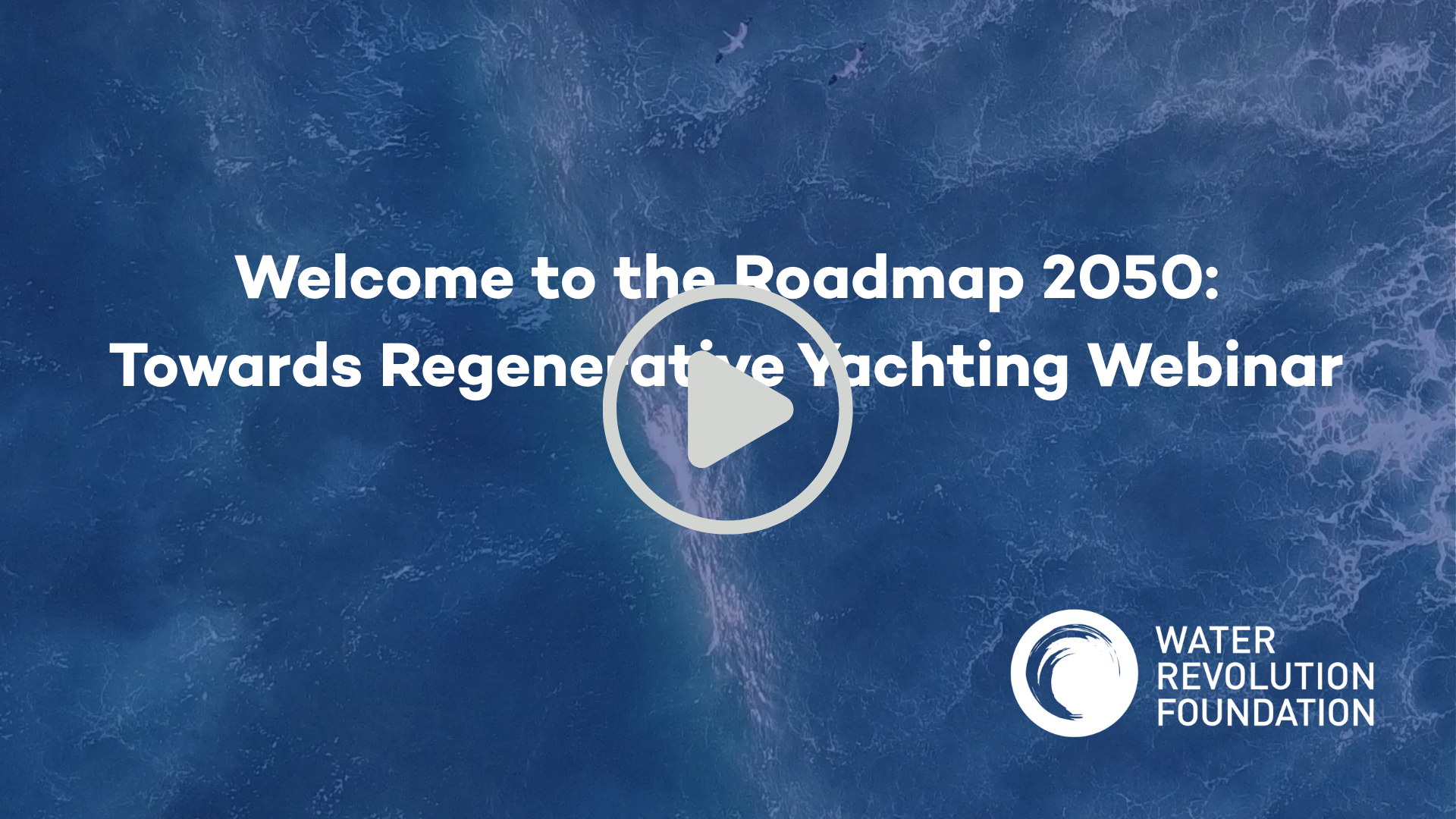The Roadmap 2050: Towards Regenerative Yachting
The environmental strategy for yachting
The Roadmap 2050 is a compass to navigate together through what are, unchartered waters.
Yachting can and should be pro-active and openly commit to net-zero, by latest 2050 and coordination and collaboration is key to accomplish this. Developed through collaboration, following the Life Cycle Approach and based on a unique data exercise, the Roadmap covers every stage of a yacht’s life cycle—Design, Build, Operation, and Refit—with clear, measurable targets set in five-year increments. The Roadmap provides a path towards net-zero for both product and process, leaving no stakeholder behind and requiring everyone’s involvement.
Watch our Roadmap 2050 webinar
The Roadmap to 2050 is designed to serve as a compass for navigating uncharted waters—together.
It outlines a collective, coordinated approach with quantified goals that engage and empower every stakeholder in the yachting industry. By committing to this roadmap, yachting companies can future-proof their operations, not only advancing decarbonisation but also moving towards a regenerative future.
Explaining the need, the background and compilation of this Roadmap is a critical step for soliciting commitment.
Beyond regulatory thresholds
The Roadmap incorporated current and expected regulatory thresholds, yet goes beyond these. While it remains voluntary, it empowers the industry to chart its own course and be goal driven rather than compliance driven.
This sector-specific environmental strategy, gives clear directions for companies and individuals. Through quantified targets priorities are set and guidance provided where to work towards and what to focus on. It is aimed to spark innovation, forward thinking, competition and collaboration, all to accelerate progress.
The 2025 baseline was defined through data gathered from Designers, Builders, Operators, and Refit yards. This data was used to estimate the current status and set proportional targets, measured in percentage reductions rather than absolute numbers, for each life cycle stage. This marks the first step in a process that will become increasingly detailed with broader industry participation. Targets might look ambitious and bold, yet with a growing yachting fleet, and therefore growing absolute impact per default, there is a lot of work to do to get the impact trajectory down and to net-zero in 2050.

The growing fleet
Yachting is one of the few maritime sectors in which the fleet continues to grow.
Each year, approximately 170 new yachts over 30 metres are delivered, and there is no true end-of-life cycle for most vessels. As a result, the sector’s environmental impact trendline continues to rise, at odds with the downward trajectory needed to reach net-zero emissions by 2050, in line with IMO targets.
The Roadmap 2050 has accounted for this ongoing fleet expansion when setting its reduction goals. Alongside continuous efforts to lower energy use, minimise waste, and optimise freshwater consumption on board—guided in part by the Environmental Crew Guidelines developed by Water Revolution Foundation for and by crew, alternative fuels such as HVO and stakeholders working towards the targets set out by the Roadmap 2050 offer a pathway to significantly reduce emissions from the existing fleet.
Targets per life cycle stage
Zoom in on the set targets between 2025 and 2050 for each life cycle stage of a yacht. These sections also clarify which stakeholder groups are involved per stage and are therefore seen as instrumental to progress together.
Going beyond reduction efforts
The Roadmap graph visualises the current estimated negative impact division among the four life cycle stages in 2025 below the x-axis, and their trajectories towards 2050.
Above the x-axis is the mirror, representing the required positive impact investment in carbon sequestration, restoration of biodiversity and contaminated soil & water, to neutralise the negative impact. Reducing efforts of negative impact will not be sufficient to arrive at net-zero. To facilitate effective compensation efforts, the upcoming Ocean Assist programme offers a structured pathway for the Restore obligations we have. This yachting-specific blue finance mechanism is set to maximise financial and non-financial resources to support nature-based solutions and aid the global effort to restore ecological impacts. This programme enables the yachting community to make measurable, regenerative contributions to global ocean agendas—redefining the relationship between economic growth and ocean well-being. It also enables to go beyond and become nature-positive, a logical space to be in for an industry that relies so clearly on the well-being of the oceans.


The collective path forward
To effectively track progress, yachting needs a centralised, standardised data monitoring system.
This system should be designed for collective benefit—allowing participants to track their own progress, benchmark it against their peer group and as such contribute to monitor the overall sector progress on the set targets and its trajectory toward net-zero.
Selecting the right KPIs, determining the scope for the data submission to enable comparison, utilising existing sources, and setup a frequent data collection mechanism for monitoring is what needs to happen within 2025 with a critical mass of industry players.



